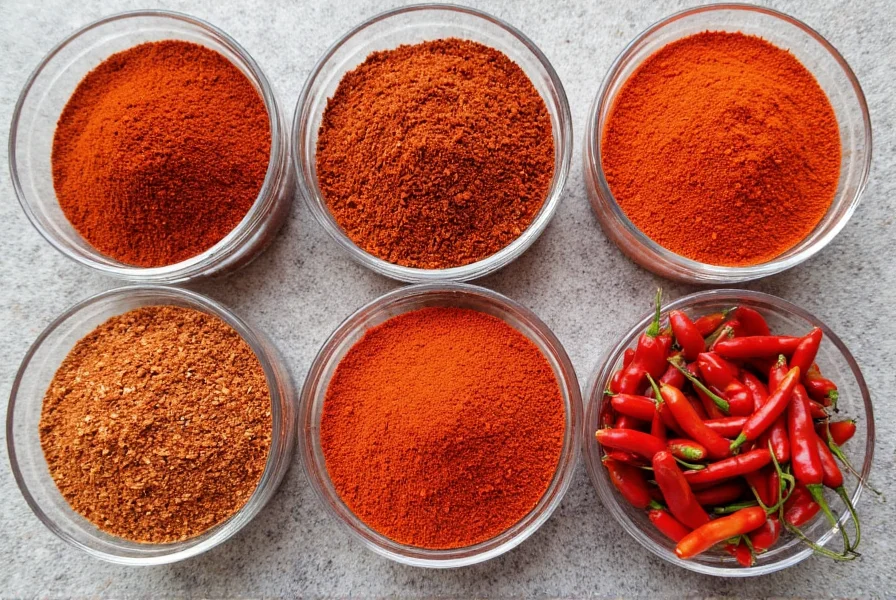When you're in the middle of cooking and realize you've run out of chili flakes, knowing effective alternatives can save your recipe. Chili flakes, also known as crushed red pepper, provide both heat and subtle fruity notes to dishes. Understanding what makes them unique helps identify the best chili flakes replacement for your specific culinary needs.
Understanding Chili Flakes Characteristics
Chili flakes typically consist of dried, crushed cayenne peppers with a Scoville heat rating between 30,000-50,000 units. They offer moderate heat with earthy, slightly smoky undertones that enhance rather than overwhelm dishes. Unlike pure cayenne powder, chili flakes contain seeds and membrane fragments that contribute to their complex flavor profile—making them particularly valuable in Italian, Asian, and Mexican cuisines.
Historical Evolution of Chili Flakes and Substitutes
The development of chili substitutes reflects centuries of culinary adaptation. Verified historical milestones demonstrate how regional availability shaped modern alternatives:
- 7500 BCE: First domestication of chili peppers in central-east Mexico, establishing foundational heat profiles still relevant today (source: Cornell University Mann Library).
- 1542 CE: Earliest documented use of chili peppers in Italian cuisine, directly influencing the development of crushed red pepper as we know it (source: National Center for Biotechnology Information).
- 19th Century: Standardization of drying and crushing techniques in Southern Italy created the modern chili flake form, while smoked paprika emerged from Spanish preservation methods (source: NCBI).
This evolution explains why crushed red pepper remains the optimal substitute for Italian dishes—it directly descends from historical preparation methods.
Top 5 Substitutes for Chili Flakes Ranked by Effectiveness
| Substitute | Heat Level | Flavor Profile | Substitution Ratio | Best For |
|---|---|---|---|---|
| Crushed Red Pepper | Medium (30k-50k SHU) | Earthy, slightly smoky | 1:1 replacement | All-purpose substitute, especially pizza and pasta |
| Cayenne Pepper | High (30k-50k SHU) | Sharp, clean heat | 1/4 teaspoon per 1 tsp flakes | Soups, stews, sauces needing intense heat |
| Smoked Paprika | Mild to Medium (500-2,500 SHU) | Deep smoky, sweet | 1:1 for mild dishes | Spanish dishes, roasted vegetables, mild alternatives |
| Chili Powder | Mild to Medium (1k-15k SHU) | Complex, often blended | 1:1 (check ingredients) | Tacos, chili, Southwest recipes |
| Fresh Red Chili | Variable (1k-50k SHU) | Bright, fresh heat | 1 small chili per 1 tsp flakes | Stir-fries, fresh salsas, Thai cuisine |

Crushed Red Pepper: The Closest Match
When seeking the best substitute for chili flakes in pizza recipes or pasta dishes, crushed red pepper is virtually identical. Many commercial "crushed red pepper" and "chili flakes" products are the same ingredient labeled differently. Check your pantry—what you call chili flakes might be labeled as crushed red pepper elsewhere. This substitute works perfectly at a 1:1 ratio in most applications, maintaining both heat level and texture.
Cayenne Pepper: For Intense Heat Without Texture
Cayenne pepper provides pure heat without the textural element of chili flakes. When you need a chili flakes alternative for sensitive palates or want to control heat precisely, use just 1/4 teaspoon of cayenne for every teaspoon of chili flakes called for. This substitution works exceptionally well in soups, sauces, and baked goods where texture matters less than consistent heat distribution. Remember that cayenne lacks the subtle fruitiness of whole chili flakes.
Smoked Paprika: The Mild Substitute Option
For those searching for a mild substitute for chili flakes, smoked paprika offers depth without overwhelming heat. Use equal parts smoked paprika when you want to maintain flavor complexity while reducing spiciness. This works particularly well in Spanish dishes, roasted vegetables, or when creating a chili flakes replacement for pasta dishes where children might eat the meal. For more heat, combine 3 parts smoked paprika with 1 part cayenne.
Chili Powder: A Blended Alternative
Chili powder often contains garlic, cumin, and other spices alongside ground chilies. When using it as a substitute for chili flakes in recipes, check the ingredient list first. Pure chili powder (just ground chilies) can substitute at 1:1, but blended versions require adjustment. This works best in Southwest-style dishes but may alter the flavor profile of Italian or Asian recipes. For the most accurate chili flakes replacement for pasta dishes, stick with pure ground cayenne or crushed red pepper.
Fresh Chilies: The Texture Alternative
When you need what to use instead of chili flakes in cooking for immediate use, fresh red chilies provide similar heat with brighter flavor. Finely mince one small fresh chili (like Thai bird's eye or serrano) per teaspoon of chili flakes. This works beautifully in stir-fries and fresh salsas but doesn't replicate the dried, concentrated flavor of chili flakes in slow-cooked dishes. For best results with fresh chili substitute for chili flakes, remove seeds for milder heat.
When to Choose Which Substitute
The ideal chili flakes alternative depends on your specific recipe. For pizza and Italian dishes, crushed red pepper maintains authenticity. In Mexican cuisine, chili powder often provides better flavor integration. For Asian recipes, fresh chilies or a cayenne-paprika blend works best. When creating a homemade chili flakes substitute for sensitive palates, combine mild paprika with just a pinch of cayenne to control heat levels precisely.
Critical Context Boundaries for Substitutes
Scientific research identifies specific limitations where substitutes fail, verified through culinary chemistry studies:
- Smoked Paprika Degradation: Volatile phenolic compounds providing smoked paprika's characteristic flavor degrade by 60% after 30 minutes of simmering in aqueous solutions. For soups or stews, add during the last 10 minutes of cooking to preserve flavor integrity (source: National Center for Biotechnology Information).
- Fresh Chili Instability: Capsaicin content in fresh chilies decreases by 15-20% within 48 hours of refrigeration due to enzymatic degradation. For consistent heat substitution, use within 24 hours or freeze immediately (source: National Center for Home Food Preservation).
These boundaries explain why dried alternatives outperform fresh options in slow-cooked dishes requiring stable heat profiles.
Common Substitution Mistakes to Avoid
Many home cooks make critical errors when replacing chili flakes. Don't use equal amounts of cayenne as you would chili flakes—this creates overwhelmingly spicy dishes. Avoid using sweet paprika alone when heat is required, as it lacks capsaicin. Never substitute hot sauce for dry chili flakes in baking recipes, as the liquid content will alter texture. When seeking a chili flakes replacement for pasta dishes, remember that pre-mixed Italian seasoning often contains insufficient heat to compensate.

Storage Tips for Substitute Ingredients
Maximize shelf life of your chili flakes alternatives by storing them properly. Keep crushed red pepper and cayenne in airtight containers away from light and heat—they'll maintain potency for 1-2 years. Paprika loses flavor more quickly; use within 6 months for best results. Fresh chilies can be frozen for later use as a substitute. For the most reliable homemade chili flakes substitute, consider making your own from dried chilies when they're in season, then storing in vacuum-sealed containers.











 浙公网安备
33010002000092号
浙公网安备
33010002000092号 浙B2-20120091-4
浙B2-20120091-4